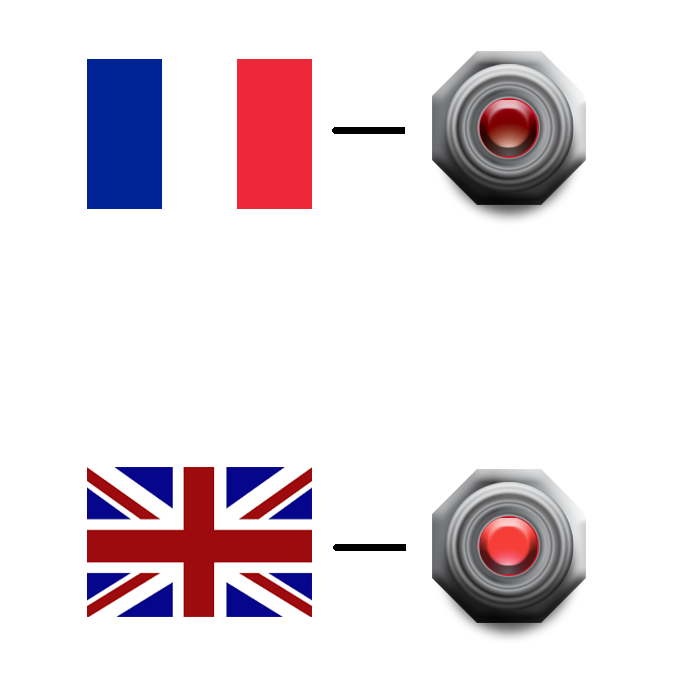Mechanics [ contact ]
Right Ascention axis
Originally, the RA axis consists of a threaded axis screwed into the RA body of the mount, on which the toothed gear pivots, around which the declination body pivots, the brake being released. When the brake is used, the gear joins the declination body, and the assembly pivots around the threaded axis.No bearings, nowhere.
I chose to change the operation:
A shouldered shaft mounted on axials and radials bearings will rotate in the RA body, and will be secured to the DEC body by means of set screws. The gear will pivot around the shaft (on a plain bearing), only with the brake released. With the brake applied, the DEC body, the gear and the shaft will be united and the assembly will turn in the bearings of the RA body.
By the way, I will take the opportunity to machining a new worm shaft / worm gear couple which I hope will be more precise than the original one.
This new screw will be housed in an aluminum support which will also contain the gear motor.
The RA shaft will be shouldered, mounted on radial and axial bearings, the whole will be loaded by an M8 x 125 nut at the lower end.
The bottom bearing will be housed directly in the RA body, while the upper bearing has been deliberately offset to allow the track of the gear not to be cantilevered, but above the high bearing (the worm gear is hollow).
A grease cap will close the assembly.
The Gear / Worm couple will be lapping in by rotating it, after having coated the teeth with fine grain valve lapping paste.
The RA motor and worm shaft support has been cut in the mass, and will be fixed in place of the original worm shaft support. Buttonholes have been provided to adjust the operating clearance.
On the side of this support is the MXL toothed belt transmission, protected by a Plexi glass.
Declination axis
The declination axis is a bit more complicated. Originally, a threaded axis was attached to the DEC body. A first plate pivots around this axis, and can be secured to the DEC body by means of a brake. The instrument holder tray is placed in front of the first tray, and can move more or less 15° in relation to it, by means of a toc, a spring and a screw fitted with a command flexible. Released brake, it is this set of two plates which moves relative to the DEC body, allowing positioning. Brake applied, only tracking errors can be compensated. Wishing a two-axis motorization, the declination system must be reviewed. Since there is no worm gear, a gear motor with a high reduction ratio (100:1) will ensure the movement, while the brake system will be retained to allow balancing. The DEC body will be used upside down: instrument holder plate on the side of the counterweight bar, and counterweight bar at the end of the engine assembly, brake side. A shaft on axials and radials bearings will be put in place through the DEC body, and will transmit the movement of the geared motor to the instrument holder plate. Brake released, the body of the geared motor will rotate around the DEC body, given the high reduction ratio, the rotational movement will be transmitted to the shaft and the plate. Brake applied, only motor movement will be transmitted.
Since the declination body is flat, there is not enough material to accommodate a bearing. A remote bearing box will be manufactured, centered in the declination body.
This bearing box will contain the radial bearing, and the axial bearing on the instrument side.
The shouldered shaft will carry the instrument holder plate (fixed by grub screws) at one end, and the motor coupling at the other. On this same side, an M8x125 nut will load the assembly.
The motor will be housed in a three-part aluminum support, the counterweight bar will be screwed into the last part.
Assembly
Since the DEC motor support must rotate around the DEC body, the axial bearing which allows the rotation of these two elements relative to each other has seen its tight ring replaced by a free ring, which is adjusted in the first part of the DEC motor mount. The shaft freely passes through the axial bearing. During assembly, the elastic coupling of the declination motor was a little too ... elastic. I replaced it with a more rigid Nylon coupling.Polar Scope
The polar scope, of the SkyWatcher type, will be integrated into a three-part aluminum body closed by a watch glass. The part carrying the polar finder will be able to turn in the body, to align the reticle with the vertical. This body will be fixed on the back of AD's body by means of a dovetail and two aluminum flash shoes. A five-LED illuminator will be mounted inside, the light will reflect off the watch glass and allow the reticle to be seen in contrast. The LEDs were drowned in hot glue. O-rings have been placed on either side of the watch glass.Compass / Levels
An option that I wanted to add: Levels and a compass integrated into the mount. No forgetting possible like that...Site Map | Legal Notice | Contact | Site optimized fo FireFox (?) | Cookies Free (*)
Copyright © 2012 - 2024 ADG. Developpement, production & hosting by ADG.
Original theme by ADG.
V 1.6 [ 07-06-2021 ]


